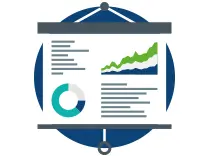
Today’s customer-centric start-ups like Uber and Airbnb have set a new standard by giving their users frictionless buying experiences on their favourite digital devices.
Consumers expect similar kinds of experiences from all the brands they interact with. Yet most brands are legacy companies with large, expensive technology infrastructure that’s not up to the task.
According to a survey by Ovum, nearly half (47%) of customer service managers rate outdated technology as their toughest challenge in delivering great service.
The challenge of keeping up with customer expectations
Across many industries there is little distinction between competitors’ products and services, so CX has become a critical competitive differentiator.
At the same time, new customer communications channels are emerging. Adding and managing these channels in an integrated manner is a complex task.
The growing expectations of CX, combined with new channels, demand that companies deliver what customers want and communicate with them in the manner they wish.
The joined-up business
A contact centre’s processes, technologies, staff, and data must be all aligned. The appropriate technology system, business process, and customer transaction data all need to be immediately available to whatever member of staff (or automated system) is managing a given customer interaction, transaction, or relationship.
The benefits of workflow
Most business processes and customer interactions can be broken down into simple steps. Agents can be guided through these in a flexible manner by workflow software that is able to re-route when necessary.
With a robust workflow in place, the result is faster, more accurate customer interactions and less hold time. These benefits can be brought to any channel and draw upon whatever data sources, systems or processes are required for the agent to get the job done. Everything the agent needs is presented to them on-screen exactly when they need it.
The critical point is that while this requires systems and data sources to be integrated, they do not have to each be integrated with one another individually. Instead, everything can be pulled into the agent desktop via the workflow using APIs (Application Program Interfaces).
This vastly simplifies the process of integrating multiple legacy systems because they don’t have to ‘talk’ to one another, just to the workflow.
Be flexible like a start-up
A start-up can be nimble and rapidly make changes to products, services, systems and processes in response to commercial opportunities and customer feedback. For the most part, legacy competitors lack this ability and so their lunch eventually gets eaten by their smarter competitors.
The use of workflow software brings this ability to all companies, no matter how many disparate systems they employ or how old their software and infrastructure is. Best-in-class workflow software can even remove the IT team from the loop altogether and enable operations to create and modify their own workflows and processes with a drag-and-drop user interface.
Optimisation also requires a joined-up operation, as analytics is only useful for performance improvement if it takes in the whole picture. Data collection is easier if there is a central point at which most events occur.
Some practical steps to get started
Whether they are written down, memorised by staff, stored in an Excel sheet, or managed with BPMS software, your organisation has processes for different types of interactions and transactions.
Reviewing these and mapping them all is a good place to start. Trim the fat and ensure that each process is as lean as possible, with the fewest steps, and remove processes that are unnecessary or outdated.
Once workflow software is installed and integrated with your systems, these process maps can be turned into individual workflows that call upon those applications when needed.
Finally, hook your data collection and analytics packages up to the workflow system and decide what quantitative, qualitative and ad-hoc data you would like to capture for analysis. Use this information to identify further efficiencies in your processes, eliminate unnecessary or confusing processes, and add new ones as you uncover new opportunities.
For more information read more about Infinity’s Workflow here.











